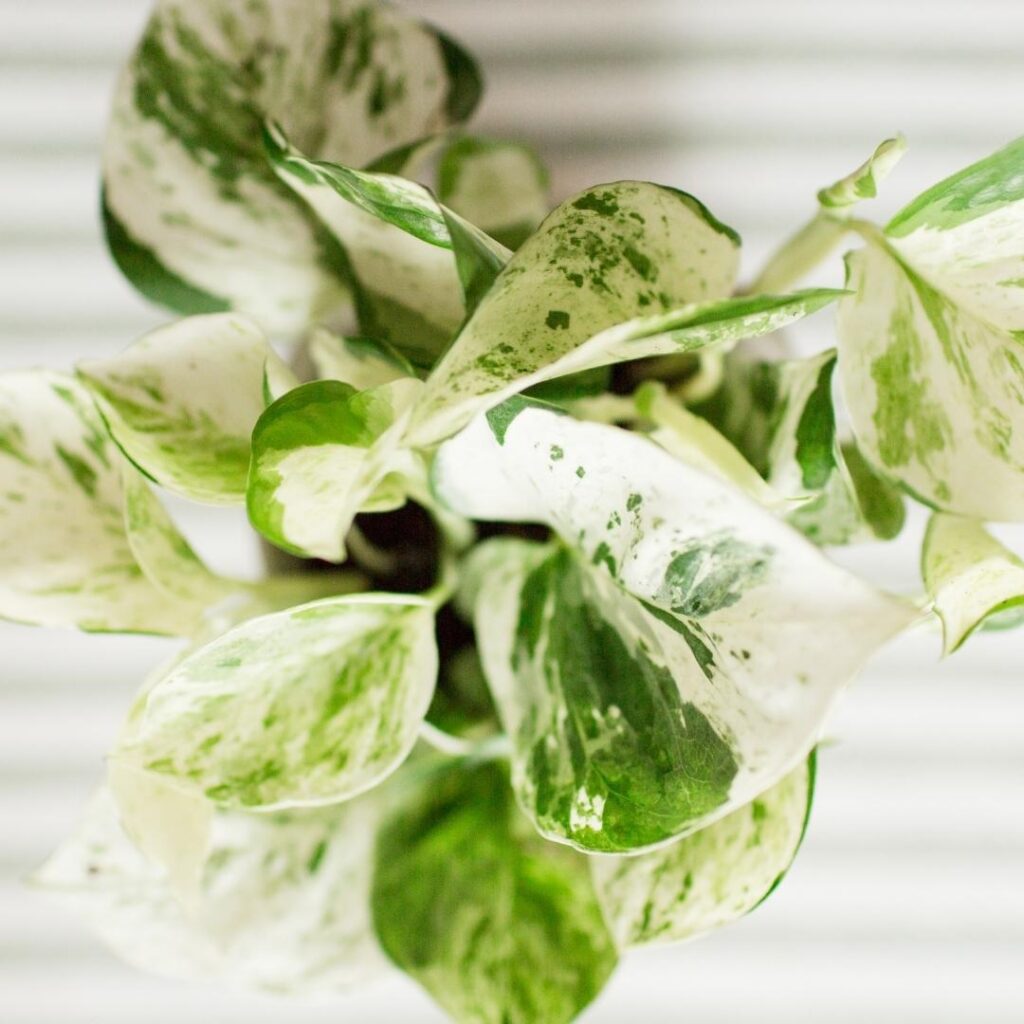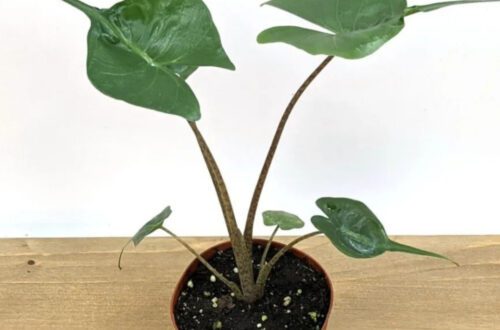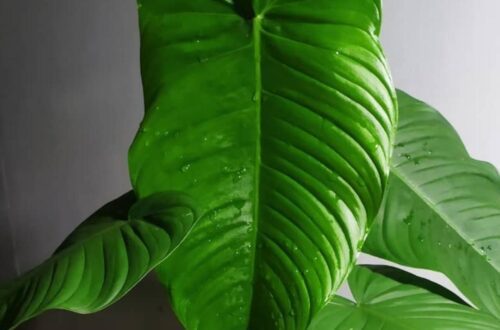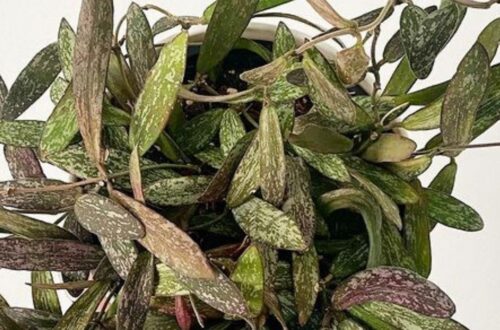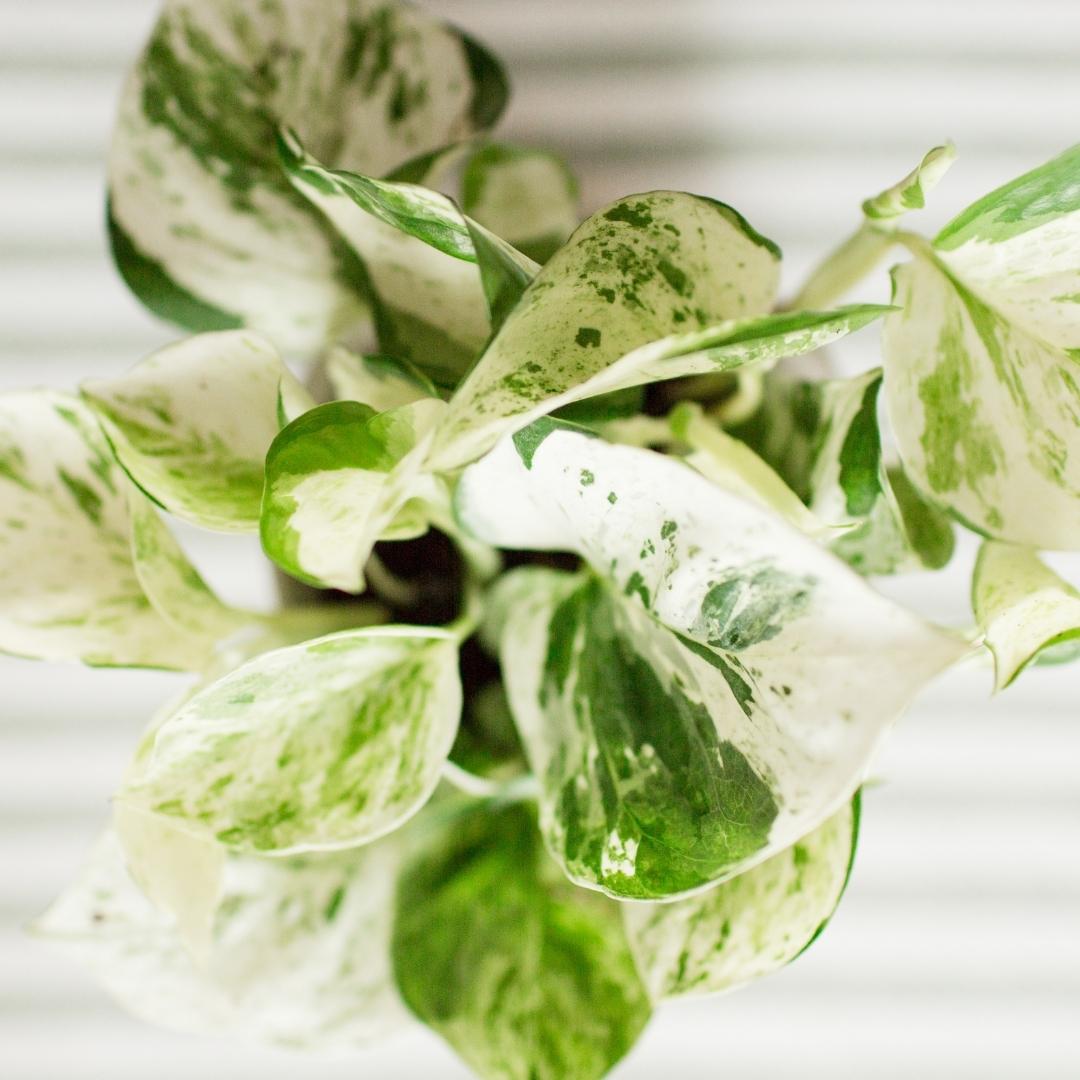
Pearls And Jade Pothos Care
We run down how to care for your pearls and jade pothos. They are easy to care for as long as you don’t overwater them and give them plenty of light, but no direct which can burn the leaves.
Pearls And Jade Pothos Care Summary
| Light needs: | Medium to bright indirect sunlight. |
| Watering needs: | Check weekly, water if top 50% of soil is dry. |
| Fertilizer: | A balanced plant feed once a month in the spring and summer months. |
| Soil: | A well draining potting compost, with added perlite. |
| Humidity: | 50%. |
| Temperature: | 18°C to 30°C (64-86°F). |
| Where to buy: | Try our list of Rare Plant Shops. |
| Common issues: | Pests like mealybugs and aphids. |
Introduction
The pearls and jade pothos is a wide-leafed variegated pothos with mottled green splotches. It was produced and patented by the University of Florida, it’s a really nice cultivar. Be patient with these as they can be slow growers, as far as pothos are concerned.
See also: Pothos Propagation, Giant Pothos, Neon Pothos Care, Cebu Blue Pothos, Scindapsus Treubii Moonlight, Glacier Pothos, Epipremnum Pinnatum, Can Pothos Grow Outside, Why Is My Pothos Drooping.
Pearls And Jade Pothos Light Needs
Medium to bright indirect sunlight is best, don’t let it get direct sun that may burn the variegated areas of the leaves quickly.
Tip: because of the variegation you want medium to bright indirect sunlight, low light will be too little.
How Often to Water
Check the soil once a week with your finger and water the plant if the top 50% or more is dry. The bigger the plant, the more water they will need, some people have small pots with huge long vines, they will obviously need more, but as ever, test the soil first.
The longer the vines the more water they will need. I have some of my pothos in quite small pots with long vines hanging down and they dry out very quickly in the summer. Always check the soil first, but you’ll need to check longer vining plants more in the summer as the soil will dry out quicker.
Tip: don’t be tempted to overwater these as pothos can get root rot easily.
Fertilizer
Feed your pearls and jade pothos a balanced plant feed every month in the spring and summer months, do not feed them in winter. It’s better to over dilute the fertilizer rather than giving them something too strong which can burn the leaves.
Pearls And Jade Pothos Soil
Use a well draining potting compost, you can add some perlite for extra drainage. You can make a quick mix by using one part perlite to 4 parts normal soil and mixing it well.
When To Repot
Repot your plant when the roots outgrow their current pot. It’s worth checking them twice a year at least as they can grow very quickly.
Humidity
50% humidity or above is good, they are tropical houseplants after all. They leaves crisp up if they don’t get enough. Keeping plants together helps keep them humid as they give off some humidity through out the day.
Temperature
Keep your pothos ideally in the range 18°C to 30°C (64-86°F) during the day. At night and in the winter aim for a minimum temperature of 10°C (50°F).

Pearl And Jade Pothos Propagation
These pothos can be easily propagated with stem cuttings. All you need is one leaf and one node per cuttings (the node is a joint in the stem that the leaves grow from, and that roots will come out of eventually). So take stem cuttings and cut them down into one leaf / one node sections, then leave them for a half a day for the wounds to heal over. You can then put them in a jar of filtered tap water to root. Make sure the nodes are in the water but no leaves are as this an cause rot.
Tip: for a fuller plant: take cuttings, water propagate them and then plant them back in with the main plant. You can take long stems and get lost of cuttings from them by cutting them down in sections with just one leaf and one node each. When you plant them back into the main plant you want a ‘full head of hair’ with no bare patches of soil, just loads of stems putting out growth.
Pearl And Jade Pothos USDA Zones
They can grow outside in zones 10-12.
Manjula Pothos Vs Pearls And Jade
The manjula leaves are much wider and softer than the pearls and jade. The pears and jade has a green tone and white variegation, but the manjula has a many more shades of green in the variegation as well as white.
Pearl And Jade Pothos Vs Snow Queen
The snow queen has a much more speckled variegation, the pearls and jade has more defined areas of white and green.
Are They Toxic To Cats?
Whilst not normally extremely dangerous, they are toxic consumed and can cause vomiting and oral irritation, so seek vets advice if you think your dog or cat has eaten any.
Pearls And Jade Pothos Scientific Name
It’s scientific name is epipremnum aureum ‘Pearls and Jade’
Pearls And Jade Pothos Vs Manjula
They are similar variegated plants, the pearls and jade is much smaller. The manjula pothos has more marbling on it.
Pearls And Jade Pothos Vs N’joy
The variegated patterns on these plants a very similar and they are difficult to tell apart, but the pearls and jade has some flecks of green inside the white areas of variegation, where as the N’joy’s white areas have no green flecks in them in general.
Pearls And Jade Pothos Vs Marble Queen
They are easy to tell part as the marble queen has much more marbling on it, and less white. The marble queen has moral oval shaped and bigger leaves too.
Where To Buy
Try our list of Rare Plant Shops.
Pearls And Jade Pothos Care FAQs and Common Problems
Mealybugs, aphids and other pests are common issues, so check for these regularly. Leaf burn from too much sunlight is another common problem that can occur on the variegated parts of the leaves especially.
Other Articles You Might Like
Hope you liked our article, you might also like these articles: Pothos Leaves Curling Pothos N Joy Vs Pearls And Jade, Can Pothos Grow Outside.
Please follow us on Instagram and Pinterest for regular plant updates and occasional plant giveaways.
